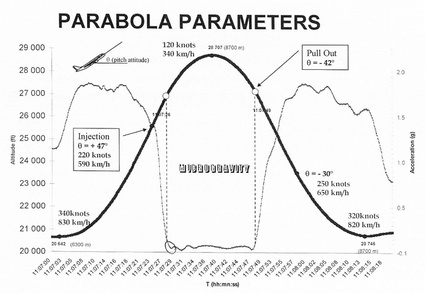Finally kicking off my reports on the last edition of Transmediale. Starting by taking the side door, the one that opens on an exhibition and performance which were part of the ‘off’ programme of the festival. Both focus on one of the latest artistic enterprises of Agnes Meyer-Brandis. Most of you know by now that there’s as much fantasy as science in Agnes’ works. This time she played the role of Alice in wonderclouds for a series of experiments in weightlessness.
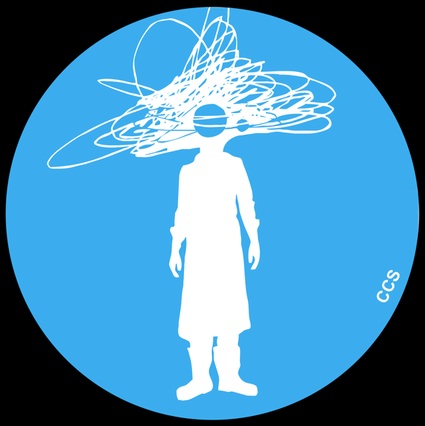 CCS Logo
CCS Logo
In September 2007, on occasion of the tenth parabolic flight campaign of the DLR (German Aerospace Center), Agnes Meyer-Brandis was invited to participate in one of its zero-gravity flights, which are primarily reserved for scientific purposes, and to work under conditions of temporary weightlessness on her art project Cloud Core Scanner. I don’t think i’d have the nerve for the experience. Nor the stomach. The aircraft used for zero gravity flights are given the delightful nickname of Vomit Comet, you see.
Here’s what happens during one of these parabolic flights: The aircraft lifts its nose towards the sky at an angle of 45 degrees. The plane is ‘pushed over’ the top to reach the zero-gravity segment of the parabolas. The crew then experience about 25 seconds of weightlessness. At approximately 30 degrees ‘nose low’ a gentle pull-out is started which brings back everyone and everything on the aircraft floor. Finally, the g-force is increased smoothly to about 1.8 g’s until the aircraft reaches a flight altitude of 24,000 feet. The roller-coaster experience is obviously repeated dozens of time.
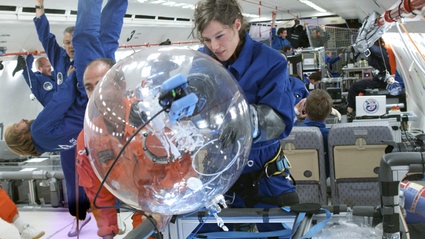 AMB working
AMB working
The objective of Agnes was to study what she calls “cloud cores” in a state of weightlessness. These small particles suspended in the air form the basis for the formation of clouds. The water in the air condensates around these particles/cores. This accumulation of water becomes a drop and many drops generate a cloud. The artist developed probes capable of observing the otherwise elusive cloud cores.
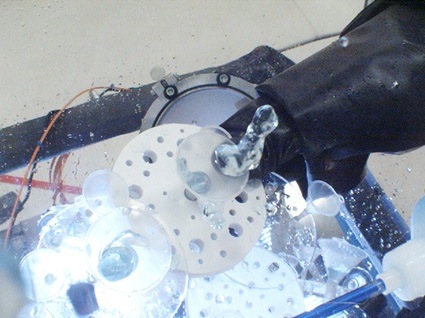 CCS videostill CCS sphere lab
CCS videostill CCS sphere lab
Agnes took two instruments on board with her. The first one, the CCS, is the first ever picture generating instrument for examining the behaviour of the smallest particles in the clouds’ interior – the famous cloud cores- during the zero gravity flight. The second apparatus is the ADM-Filmbox (ADM = Animation Durch Mikrogravitation, in english Animation Through Microgravitation) which she used to capture in images even the fastest among the tiniest cloud cores.
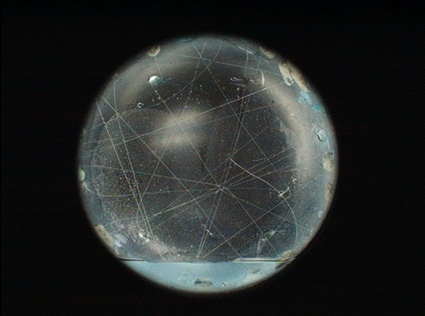 Cloud Core World
Cloud Core World
The world of Cloud Core can be observed inside what looks like little snow globes:
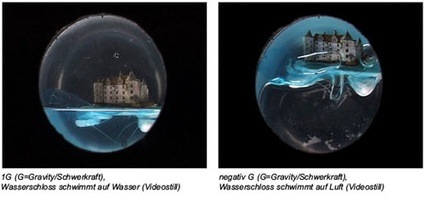 Videostills, Experiment No. 27. Moated castle swimming on water in 2G (double gravity) and moated castle swimming on air in 0G (zero gravity)
Videostills, Experiment No. 27. Moated castle swimming on water in 2G (double gravity) and moated castle swimming on air in 0G (zero gravity)
Last month, Agnes shared her discoveries in Berlin through an exhibitions and two evenings of performances.
The Cloud-Core-Scanner – In the Troposphere Lab exhibition opened in the Ernst Schering Foundation located on the ever popular with tourists Unter den Linden avenue.
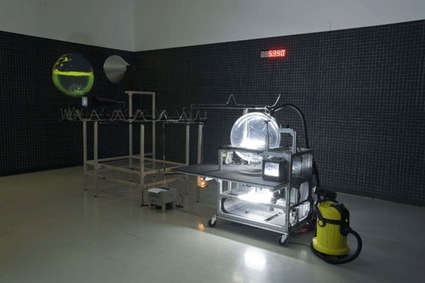 Agnes Meyer-Brandis, Cloud-Core-Scanner – In the Troposphere Lab, 2010. Installation view. Courtesy of Schering Stiftung, Berlin. © Agnes Meyer-Brandis, VG Bild-Kunst Bonn 2010. Photo: Roman März
Agnes Meyer-Brandis, Cloud-Core-Scanner – In the Troposphere Lab, 2010. Installation view. Courtesy of Schering Stiftung, Berlin. © Agnes Meyer-Brandis, VG Bild-Kunst Bonn 2010. Photo: Roman März
The exhibition explored the formation of clouds and the fusion of art and science during zero gravity.
As the press blurb said: The Material, generated under unearthly conditions, mixes and raises the issue of communication structures of contemporary art with some quite surreal forms of science (nanotechnology, Fluid-dynamic research, meteorology). As central metaphor as well as the main focus of the filmed procedures serves the theory of cloud formation.
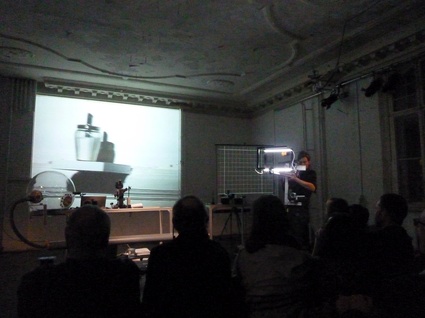 Image from the performance
Image from the performance
The accompanying performance “Making Clouds, or On the Absence Of Weight – A Contemporary Traveling Movie Show” combined the performance itself with lectures, both by Agnes and by a scientist expert in nephology, screenings of movies, experiments in science and cloud formation.
I’m not entirely sure that i understood everything that was going on that evening but i’d be ready to forget about vertigo and put my head inside the clouds if that’s half as exciting an experience as the one we caught a glimpse of during Agnes’ performance.
More images and explanations over here, ladies and gentlemen.
Pictures i took at the exhibition and during one of Agnes Meyer-Brandis’ performances.
Previous posts about Agnes Meyer-Brandis’s work: Biorama 2: the Moon Goose Experiment, Interview with Ulla Taipale from Capsula, Interview with Agnes Meyer-Brandis and SGM-Iceberg-Probe.

